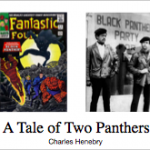Introducing your Essay
Write a 2- or 3-¶ introduction for your upcoming essay, as follows:
- Write a ¶ that engages your reader in your essay’s topic, perhaps by reference to a present-day trend or phenomenon. You can start narrow, with a tight focus on a particular event. Alternatively, you can start more broadly, with a generalization or statistical anecdote. The key is to focus on something that your reader cares about—or can be persuaded to care about.
- Write a ¶ that discusses what prior scholars have said about your essay’s topic. These scholars provide your essay’s intellectual starting point, so choose them well. You can focus on just one prior scholar, or make a generalization about what scholars say. Either way, be prepared to name specific scholars—in a footnote if not in the main text. Note: this ¶ can be combined with the preceding ¶ or skipped entirely. If you do that, you’ll wind up with a 2-¶ intro.
- Write a ¶ that names at least one of your bodies of evidence and the deeper understanding that your essay will argue on the basis of that evidence. Be careful not to get sucked in too far: this is NOT a body ¶; you’re not presenting evidence. You’re simply naming the category of evidence (“news coverage of surfers in the early 1960s”) along with your thesis-level vision (“California Dreaming a male-centered fantasy”).
Once you’re done, pare the resulting intro down to the bone (3-4 sentences per ¶, ideally), so as to enable us to read & respond to as many of them as possible. Paste your artificially short intro into the comments below.
Turning in your Essay
Essays are due on Wednesday at midnight. When your Essay is complete, Print/Export to .pdf and turn it in on the Exploratory Essay assignment page linked at right.
Introducing your Essay
Write a 2- or 3-¶ introduction for your upcoming essay, as follows:
- Write a ¶ that engages your reader in your essay’s topic, perhaps by reference to a present-day trend or phenomenon. You can start narrow, with a tight focus on a particular event. Alternatively, you can start more broadly, with a generalization or statistical anecdote. The key is to focus on something that your reader cares about—or can be persuaded to care about.
- Write a ¶ that discusses what prior scholars have said about your essay’s topic. These scholars provide your essay’s intellectual starting point, so choose them well. You can focus on just one prior scholar, or make a generalization about what scholars say. Either way, be prepared to name specific scholars—in a footnote if not in the main text. Note: this ¶ can be combined with the preceding ¶ or skipped entirely. If you do that, you’ll wind up with a 2-¶ intro.
- Write a ¶ that names at least one of your bodies of evidence and the deeper understanding that your essay will argue on the basis of that evidence. Be careful not to get sucked in too far: this is NOT a body ¶; you’re not presenting evidence. You’re simply naming the category of evidence (“news coverage of surfers in the early 1960s”) along with your thesis-level vision (“California Dreaming a male-centered fantasy”).
Once you’re done, pare the resulting intro down to the bone (3-4 sentences per ¶, ideally), so as to enable us to read & respond to as many of them as possible. Paste your artificially short intro into the comments below.
Turning in your Essay
Essays are due on Wednesday at midnight. When your Essay is complete, Print/Export to .pdf and turn it in on the Exploratory Essay assignment page linked at right.


